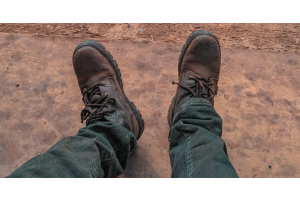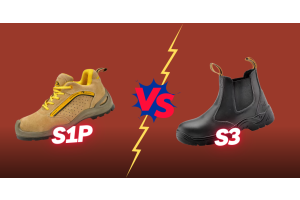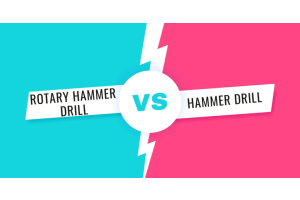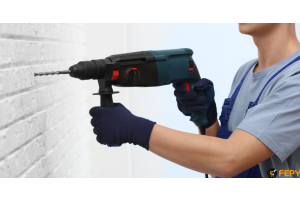<strong>Angle Grinder Usage and Safety: A Complete Guide for Beginners</strong>

What is an Angle Grinder? An angle grinder is a handheld power tool used for cutting, grinding, and polishing materials such as metal, concrete, and stone. It typically features a rotating disc that can be fitted with a variety of abrasive discs or blades for different applications. Angle grinders are commonly used in construction, metalworking, and DIY projects.
An angle grinder is like a superhero power tool that can help you cut, grind, polish, and sand almost anything! It's like having a mini construction site in the palm of your hand. Just be sure to use it with caution, as with great power comes great responsibility.
In this article, we will discuss the importance of safety of using the angle grinder and provide angle grinder safety tips on how to use them effectively with a focus on beginners.. We will also provide an overview of the different types of angle grinders and their uses, how to maintain them, and the top brands available in the market.
Understanding the Risks of Improper Angle Grinder Use
Angle grinders can be dangerous if used improperly. The risks include kickback, disc shattering, and injury from flying debris. To avoid these risks, it is important to wear appropriate personal protective equipment (PPE), such as safety glasses, gloves, and a dust mask. It is also important to inspect the angle grinder and the cutting disc before use. If you notice any cracks or damage, do not use it.
How to Use an Angle Grinder
Using an angle grinder can be intimidating for beginners. However, with the right techniques and precautions, you can use an angle grinder safely and effectively. The basic steps for using an angle grinder are as follows:
- Select the appropriate disc for the job. There are different types of discs available for cutting, grinding, sanding, and polishing.
- Install the disc onto the angle grinder. Make sure that it is secured tightly.
- Adjust the guard to protect yourself from flying debris.
- Hold the angle grinder firmly with both hands and turn it on.
- Let the disc reach its maximum speed before starting to use it.
- Apply gentle pressure and move the angle grinder back and forth to make the cut or grind.
- Turn off the angle grinder and wait for the disc to stop spinning before setting it down.
Types of Angle Grinders and Their Uses
There are different types of angle grinders available in the market, each with its advantages and disadvantages.
Here are ten different types of angle grinders and their uses:
- Corded Angle Grinder – Best for heavy-duty work but requires a power source.
- Cordless Angle Grinder – Provides flexibility but has limited battery life.
- Mini Angle Grinder – Suitable for tight spaces and lightweight work.
- Variable Speed Angle Grinder – Allows for precise control and speed adjustment.
- Pneumatic Angle Grinder – Powered by compressed air, perfect for heavy-duty work.
- Bench Grinder – Used for sharpening tools and metalworking.
- Angle Die Grinder – Suitable for polishing and grinding.
- Straight Grinder – Ideal for grinding and cutting in tight spaces.
- Large Angle Grinder – Best for cutting thick materials.
Surface Prep Grinder – Used for surface preparation before painting or coating.
How to Maintain Angle Grinders: The Angle Grinder Safety Checklist
Proper maintenance is essential to ensure the longevity and safety of your angle grinder. Here are some tips on how to maintain your angle grinder:
- Clean the angle grinder after use. Use a brush to remove debris and a cloth to wipe it down.
- Check the cord for any damage before use.
- Replace the cutting disc when it becomes dull or damaged.
- Store the angle grinder in a dry, cool place.
- Have the angle grinder serviced regularly to ensure that it is in good condition.
Best Practices for Angle Grinder Safety
To ensure that you are using your angle grinder safely, here are some best practices to follow:
- Always wear appropriate PPE, including safety glasses, gloves, and a dust mask.
- Inspect the angle grinder and cutting disc before use.
- Use the appropriate cutting disc for the job.
- Keep the guard in place to protect yourself from flying debris.
- Hold the angle grinder firmly with both hands.
- Let the disc reach its maximum speed before starting to use it.
- Avoid using an angle grinder on materials that it is not designed for.
- Turn off the angle grinder and wait for the disc to stop spinning before setting it down.
Common Angle Grinder Accidents and How to Avoid Them
Common accidents that can occur while using an angle grinder include kickback, disc shattering, and injury from flying debris. To avoid these accidents, follow these tips:
- Always wear appropriate PPE.
- Use the appropriate cutting disc for the job.
- Do not force the angle grinder.
- Do not exceed the maximum speed of the cutting disc.
- Keep the guard in place.
- Inspect the angle grinder and cutting disc before use.
Top Brands for Best Angle Grinders
When it comes to choosing an angle grinder, there are many brands available in the market. Here are some of the top brands:
- DeWalt – Known for their durability and reliability.
- Makita – Offers a wide range of angle grinders for different applications.
- Bosch – Known for their innovative features and quality.
- Hitachi – Offers affordable yet high-quality angle grinders.
- Milwaukee – Known for their powerful and durable angle grinders.
Angle Grinder Uses in Different Industries
Angle grinders are used in a wide range of industries, including construction, metalworking, and woodworking. Here are some specific uses of angle grinders in each industry:
- Construction – Used for cutting concrete, tiles, and bricks.
- Metalworking – Used for cutting and grinding metal.
- Woodworking – Used for shaping and sanding wood.
Conclusion
Angle grinders are powerful tools that can help you get the job done quickly and efficiently. However, they can also be dangerous if not used properly. It is important to follow safety guidelines and wear appropriate PPE, inspect the angle grinder and cutting disc before use, and use the appropriate cutting disc for the job.
We have discussed the different types of angle grinders and their uses, how to maintain them, and the top brands available in the market. We have also provided an overview of common angle grinder accidents and how to avoid them, as well as the specific uses of angle grinders in different industries.
Finally, we have emphasized the importance of angle grinder safety certification and training courses to ensure that you are using your angle grinder safely and effectively. By following these tips and best practices, you can use your angle grinder safely and with confidence.





